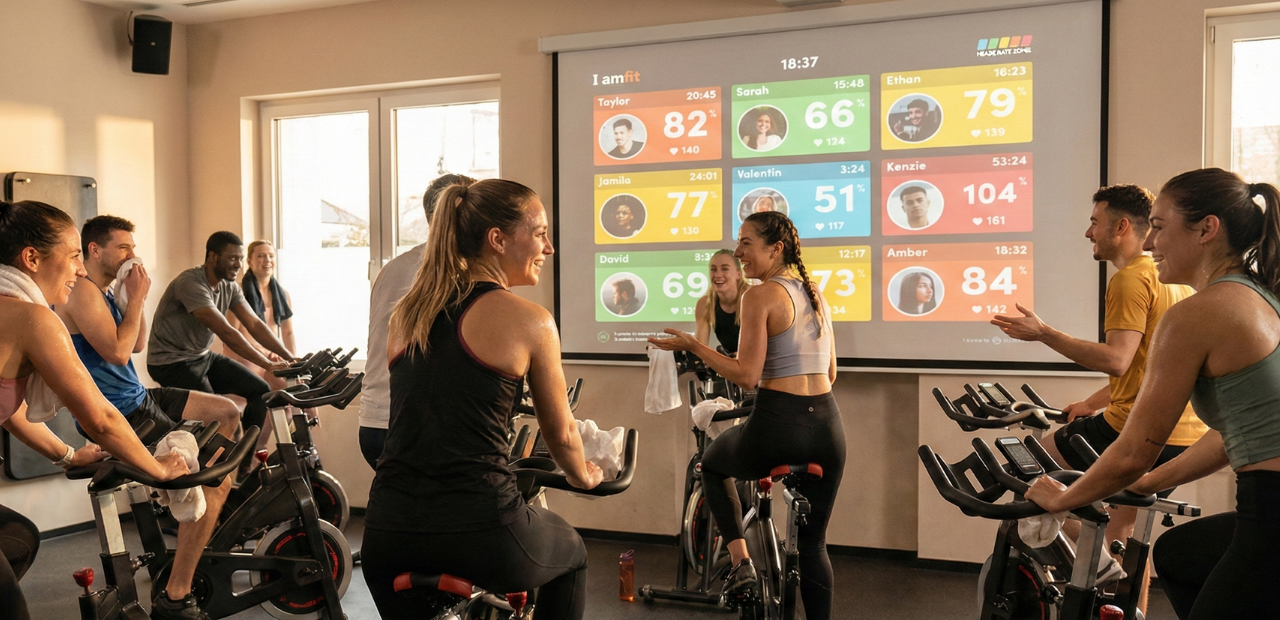The success of a personal training business isn’t just about attracting new clients—it’s about guiding them through a structured process that promotes client retention and turns them into loyal clients. This process is known as the customer journey, crucial for growth and sustainability.
The personal training customer journey tracks a client’s path from first learning about your services to becoming a loyal advocate. It consists of five stages:
- Awareness Stage
- Consideration Stage
- Decision Stage
- Retention Stage
- Advocacy Stage
Each stage reflects different levels of engagement and requires specific strategies. To simplify this, we’ll use the AIDA model (Awareness, Interest, Desire, Action), which highlights key moments that keep clients engaged throughout the journey.
Improving your personal training customer journey helps attract more clients, boost retention, and enhance your reputation and referrals.
Now, let’s dive into each stage using AIDA to guide clients from first contact to long-term commitment.
What is the customer journey in personal training?

The customer journey represents the entire experience a potential client has with your personal training services. It begins the moment they first hear about your offerings and extends to their ongoing relationship with your business.
Each phase of the customer journey, from awareness to post-signup, involves multiple touchpoints where you can make an impact.
Understanding these stages enables you to tailor your services and interactions to guide clients smoothly through the journey while also strengthening client relationships and improving their overall satisfaction.
Why is the personal trainer customer journey important?

The importance of a well-planned journey can’t be overstated, especially when it comes to fostering long-term engagement and ensuring business growth. Here’s why it matters:
1. Encourages client engagement to personal training sessions

By providing a structured experience throughout their fitness journey, you keep clients engaged and motivated. Offering consistent touchpoints that match their needs increases the likelihood they’ll stay committed to their fitness goals.
2. Improves retention rates

A seamless and positive customer experience boosts client retention. When clients feel supported and appreciated at every stage, they are more likely to continue training with you.
Engaging with clients regularly and making adjustments to their plans as needed helps ensure they stay long-term.
3. Enhances client satisfaction

Tailoring your services to meet the evolving needs of your clients boosts their overall satisfaction. By being proactive and responsive to feedback, you can ensure that their fitness experience remains positive and aligned with their personal goals.
4. Boosts referrals and reputation of your personal training business

Satisfied clients who have had a great experience are more likely to refer friends and family to your services. Positive client interactions lead to more word-of-mouth marketing and a stronger reputation in the fitness community.
5. Optimizes personal training business growth

Understanding and refining the customer’s journey can help you attract potential clients. A clear, engaging process helps convert new leads into paying clients, which directly impacts your revenue and growth potential. Learn more about how to maximize your personal trainer revenue with Virtuagym
The AIDA Model in the Customer Journey
The AIDA model (Awareness, Interest, Desire, Action) is a proven marketing framework that can help personal trainers understand the stages of the buying process of potential customers. Let’s break down each stage:
Awareness: Reaching potential personal training clients

The first stage of the journey begins when a potential members first becomes aware of your personal training business.
Strategies to create awareness include:
Social media presence
Posting informative content, success stories, and motivational messages can help attract attention and increase visibility. Engaging with followers through interactive posts, live sessions, and fitness challenges can further boost engagement and create a stronger connection with your audience.
SEO and blog posts about personal training
Optimizing content for fitness-related keywords can help your website appear in search results when people look for training services, fitness programs, or assessments. Regularly updating your blog with high-quality articles, workout tips, and client testimonials can position you as an authority in the fitness industry.
Community events
Hosting free trials, workshops, or group classes is a great way to showcase your expertise and attract new members. These events provide an opportunity for potential customers to experience your training style firsthand and connect with your existing community, making them more likely to commit.
Collaborations within the fitness industry
Partnering with local businesses like nutritionists or wellness centers can expand your reach and attract new clients. Cross-promotions, guest appearances, and co-hosted events can introduce your services to a wider audience while providing added value to your clients.
Referral programs
Encouraging your existing clients to refer friends and family can help spread the word about your services. Offering incentives such as discounts, free sessions, or exclusive rewards can make referrals even more appealing and drive consistent client growth.
Interest: Engaging potential clients

Once a potential members is aware of your services, it’s important to engage them and nurture their interest. At this stage, they begin evaluating whether your services align with their fitness goals.
Ways to build interest include:
Free fitness assessments
Offering complimentary consultations allows to experience your services firsthand. These sessions help establish trust, showcase your expertise, and give individuals a clear idea of how your approach can support their fitness journey.
A well-structured assessment can also highlight areas for improvement and create a personalized plan to keep them engaged.
Informative content
Share educational resources like fitness guides, ebooks, or workout tips to demonstrate your expertise and show how your services can help them reach their goals.
Providing high-quality content not only educates potential customers but also positions you as a knowledgeable and reliable professional in the fitness industry.
Email and newsletters
Keep potential customers engaged with regular updates about your services, promotions, and success stories. Sending personalized content, such as workout advice, client testimonials, or special offers, helps maintain interest and encourages potential members to take the next step toward commitment.
Q&A Sessions
Hosting live Q&A sessions on social media can help answer users’ questions and build trust. Interactive discussions allow you to address common concerns, explain your methods, and connect directly with your audience.
These sessions create a sense of community and demonstrate your dedication to helping individuals achieve their fitness goals.
Desire: strengthening the connection

At this point, the potential client is seriously considering your services. To move them from interest to commitment, you need to strengthen the desire for your services.
Strategies include:
Client Testimonials
Showcasing success stories and before/after transformations can help build credibility and highlight the results others have achieved with your help.
Sharing real experiences reinforces the impact of goal setting and consistent effort on overall well-being, inspiring potential customers to commit to their own fitness journey.
Tailored Programs
Offer personal training sessions that are customized to the client’s fitness levels, showcasing your ability to meet their specific needs.
A strong focus on goal setting helps create structured training programs that cater to different fitness levels, ensuring that each client progresses effectively while maintaining motivation.
Supportive Community
Promote your community as a place of encouragement and motivation by highlighting group classes, social events, and group achievements.
A welcoming environment enhances well-being and fosters long-term commitment, making clients feel like they are part of something bigger than just a workout routine.
Exclusive Challenges
Develop challenges or reward programs to keep clients motivated and connected to your fitness journey.
Whether through friendly competitions, achievement-based rewards, or special recognition for milestones, these initiatives drive engagement and provide extra motivation for clients to push themselves further.
Action: Turning interest into commitment

Converting interest into a commitment requires an easy and seamless process. Making it simple for new members to sign up and get started increases engagement and improves retention.
Here are some ways:
Clear communication
Be transparent about your pricing, available training programs, and personal training sessions. Providing upfront details builds trust and ensures new members feel confident in their decision.
Using effective communication also helps potential members make informed choices without hesitation.
Effective Onboarding
Set clear goals, offer a well-structured sign-up process, and ensure the first session sets the stage for a successful fitness journey. An effective communication strategy during this phase helps answer questions and eases concerns, making the transition smoother for clients.
Flexible Payment Plans
Provide different payment options to make joining more accessible for various budgets. Offering cost-effective membership choices encourages more people to commit long-term, reducing dropouts and increasing retention.
Mobile Apps
Offer digital sign-up forms and the ability to book or manage training sessions via an app for a smoother experience.
A mobile-friendly approach is both convenient and cost-effective, reducing paperwork while allowing clients to manage their schedules with ease. Want to know more about the best personal trainer app? Have a look at this blog
Beyond AIDA: Keeping personal training clients engaged and committed

Once a client has signed up, the journey doesn’t end. It’s essential to focus on maintaining engagement, tracking client progress, and adapting to evolving needs for long-term commitment.
Tracking progress and adapting training programs for personal trainers

To ensure clients stay motivated and committed, it’s important to:
Tracking progress
Regularly monitor improvements and celebrate milestones to keep people engaged. Recognizing even small achievements reinforces dedication and encourages consistency in training sessions.
Progress tracking also plays a crucial role in improving retention rates, as clients are more likely to stay committed when they see measurable results.
Fitness assessments
Conduct periodic assessments to gauge client progress and adjust their training sessions accordingly. A structured evaluation helps personalize workouts, making them more effective and aligned with each client’s goals.
Integrating assessments into an effective onboarding process ensures new clients start with a clear roadmap for success, boosting long-term engagement.
Provide feedback
Offer structured plans with clear action steps so clients always know what to focus on next. Regular and constructive feedback fosters motivation and helps improve retention rates by reinforcing client confidence in their progress.
A well-implemented feedback system, starting from an effective onboarding process, builds trust and increases long-term commitment.
Introduce gamification
Add fun elements, such as leaderboards or badges, to make the experience more engaging. Friendly competition and rewards encourage consistency in training sessions, keeping clients motivated over time.
Gamification not only enhances enjoyment but also strengthens client commitment, leading to higher retention rates.
Enhancing the experience for higher client retention rates

A positive and supportive experience makes clients want to return. Strategies to enhance the experience include:
Updated equipment
Regularly maintain and update equipment to ensure a clean, welcoming environment. Outdated equipment can frustrate clients, leading to dissatisfaction.
High-quality, well-maintained equipment shows your commitment to a top-tier experience, boosting customer satisfaction and signaling professionalism to customers.
Additional services
Offering services like nutrition coaching or recovery treatments adds value to your training programs. A holistic approach keeps members engaged and improves customer satisfaction. It also attracts customers seeking a more comprehensive fitness solution.
Events
Organize social or fitness events to foster a sense of community. Group workouts and challenges help clients bond, improving retention. A strong community presence boosts your social media presence, attracting new customers.
Virtual training options
Offer virtual training for clients who can’t make it to the venue. Flexibility ensures they stay engaged, enhancing customer satisfaction and expanding your reach beyond your local area.
Maintaining a personal touch

When clients feel valued and supported on their fitness journey, they are more likely to stay committed to your services. Building a strong, personal relationship with clients can make all the difference in keeping them engaged and motivated to reach their goals.
Here are some effective ways to foster client retention and ensure client satisfaction:
Regularly tracking client progress
Stay connected through follow-ups to discuss progress and challenges. These check-ins show you care about clients’ journeys and allow for adjustments to their training, improving results and client satisfaction.
Consistent engagement boosts client retention by keeping clients motivated and supported.
Customized effective communication
Send personalized messages for milestones like birthdays or anniversaries. Recognizing these moments shows clients you care beyond workouts, fostering client satisfaction.
Thoughtful engagement strengthens client retention by making clients feel valued and appreciated.
Loyalty rewards
Offer rewards like discounts or free sessions for long-term clients. Loyalty rewards show appreciation, increasing client satisfaction and encouraging ongoing commitment.
This boosts client retention and encourages referrals, helping grow your business.
Conclusion
A well-structured personal trainer customer journey is essential for building a sustainable personal training business.
By understanding each stage of the journey, from awareness to long-term engagement, personal trainers can create an experience that encourages client retention and fosters loyal clients.
Through consistent progress tracking, personalized interactions, and a commitment to continuous improvement, your clients will not only reach their fitness goals but will stay engaged and committed for years to come.
FAQ
How do you track client progress in personal training?
Use fitness assessments, track workout performance using digital tools, monitor body measurements, and record client feedback regularly.
What do personal trainers expect from clients?
Commitment to the program, honesty about their effort and challenges, consistent effort in workouts, and open communication.
How do I get more clients for personal training?
Have a marketing strategy, network, use social media, offer referral incentives, collaborate with local businesses, and provide free workshops or seminars.
How do you sell personal training to clients?
Highlight the benefits, offer personalized plans, share success stories, provide a free trial session, and address individual client needs and goals.




